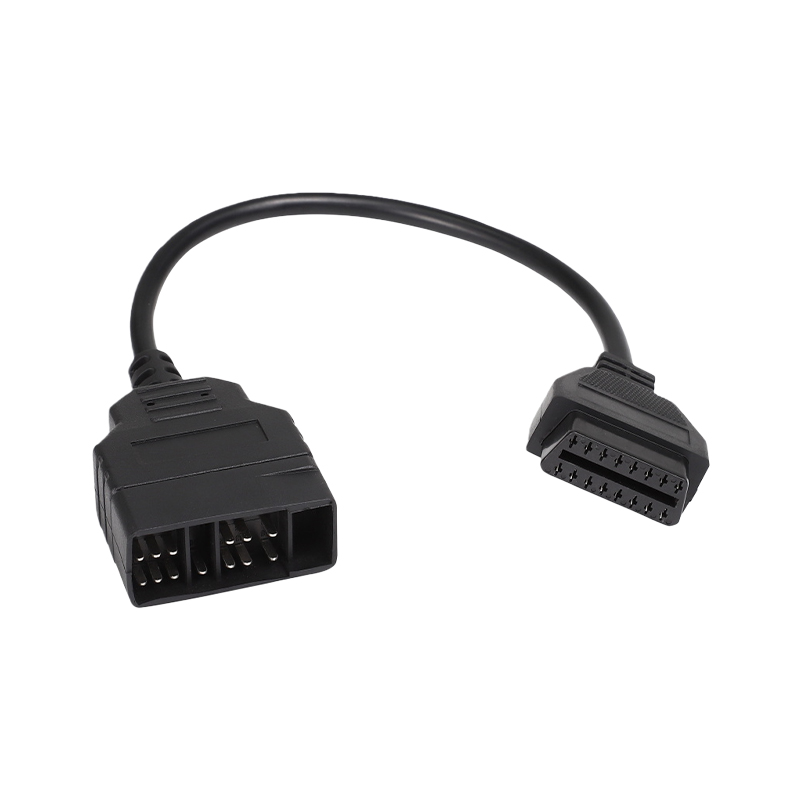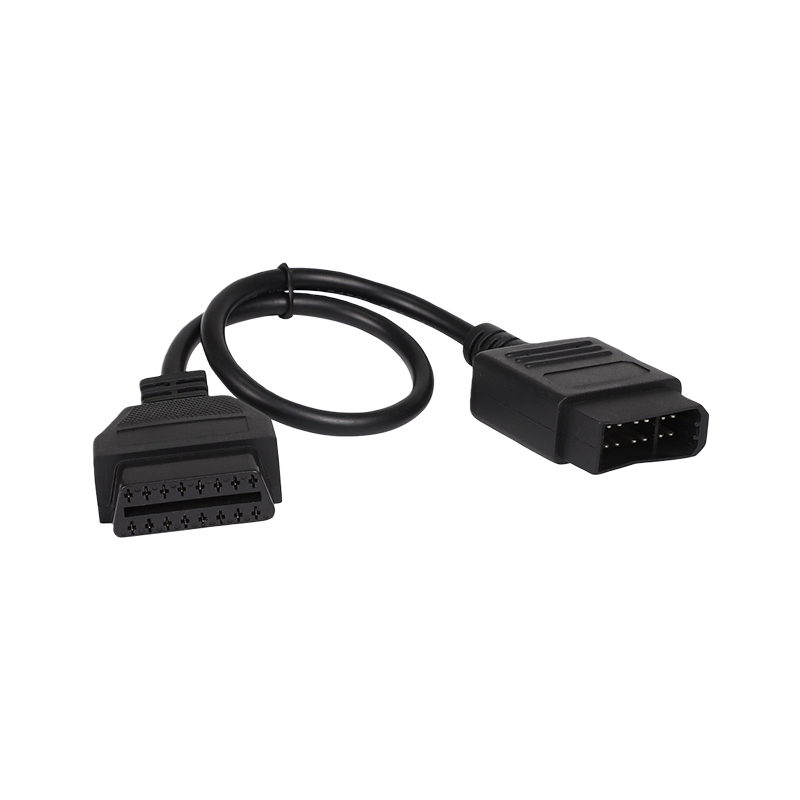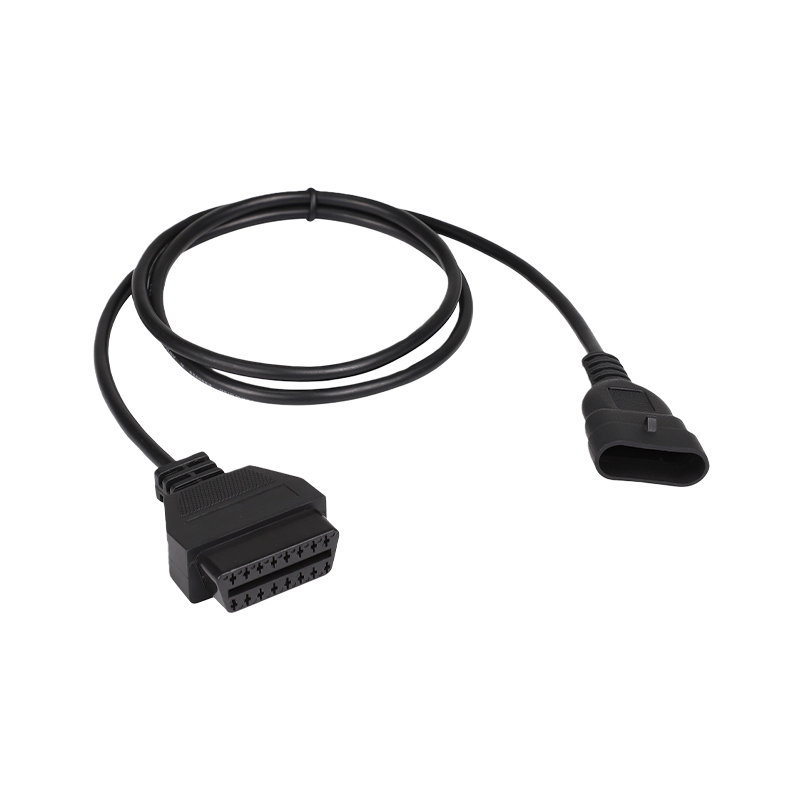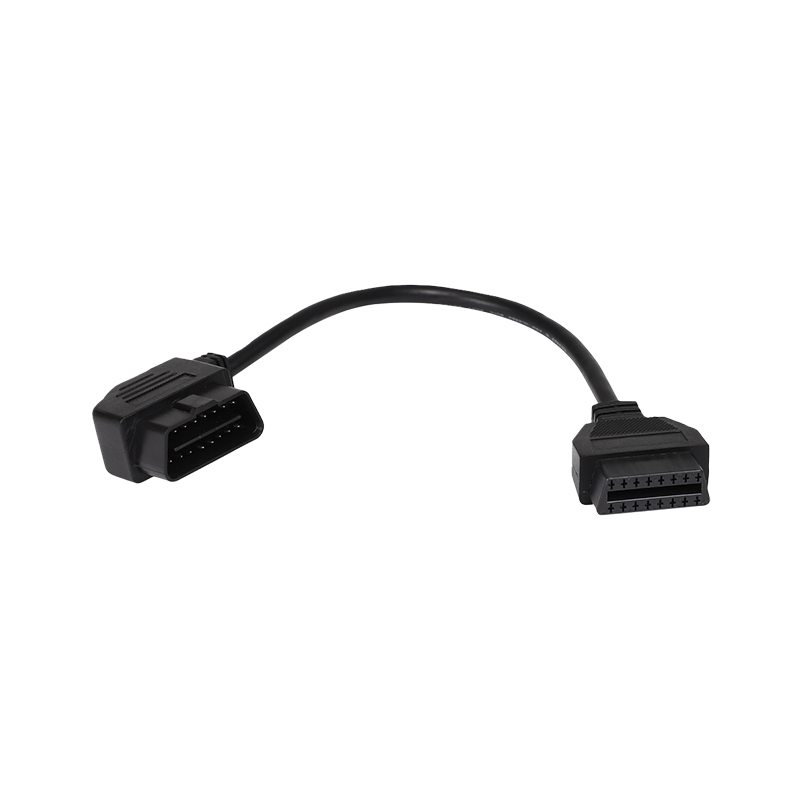How do OBD cables ensure stable and uninterrupted signal transmission in complex vehicle environments?
Release Time : 2025-10-24
In modern automotive electronic systems, OBD cables serve as the "neural pathway" between diagnostic equipment and the vehicle's brain, carrying the mission of transmitting critical data. They must not only accurately read engine fault codes but also transmit dynamic information such as engine speed, temperature, and oxygen sensor status in real time. However, the vehicle's interior is an extremely complex electromagnetic and physical environment: the engine generates strong electromagnetic interference, and the wiring harness is surrounded by various power devices such as the high-voltage ignition system, generator, and motor. Furthermore, the cables must withstand high temperatures, oil contamination, vibration, and the mechanical stress of frequent plugging and unplugging. Under such conditions, ensuring stable and uninterrupted signal transmission becomes a core criterion for measuring OBD cable quality.
The stability of high-quality OBD cables stems primarily from the precise design of their internal structure. The conductors themselves are made of high-purity oxygen-free copper, ensuring that electrical signals pass quickly with minimal loss. The conductor twisting process is optimized to help offset the interference effects of external electromagnetic fields. Even more critical is the use of a shielding layer, typically a double shielding structure consisting of aluminum foil wrapped in a copper mesh braid, which acts as an electromagnetic "wall" for the signal path. This shield effectively absorbs or reflects high-frequency noise generated by the ignition system and motor operation, preventing it from intruding into signal lines and causing data distortion or interruption. Even under high engine load and in the harshest electromagnetic environments, core signals are transmitted clearly and completely.
The material selection of the cable sheath is also crucial. It must not only be flexible enough to fit within confined spaces but also withstand high temperatures, oil corrosion, and ozone degradation. High-quality OBD cables are typically made of heat-resistant PVC or higher-grade thermoplastic elastomers. These materials maintain their elasticity and insulation properties even after long-term exposure to the high temperatures of the engine compartment, preventing hardening, cracking, or adhesion. Furthermore, the sheathing is flame-retardant, further enhancing safety. This emphasis on environmental resistance ensures stable operation in a variety of climates and operating conditions, preventing signal attenuation or short circuits due to material degradation.
The design of the connector directly impacts communication reliability. While the 16-pin OBD connector is standard, the slot depth and contact pressure vary between vehicle brands. High-quality cables feature connectors that are precision-injected, with pins precisely aligned and uniformly plated, typically with gold or nickel plating to enhance conductivity and prevent oxidation. They plug and unplug smoothly but not too loosely, ensuring each pin securely engages the corresponding contact on the vehicle's diagnostic interface, creating a low-resistance connection. Strong physical contact is essential for stable communication, preventing interruptions or bit errors caused by poor contact.
In addition, the cable's overall structure has been mechanically optimized. Tensile-resistant fiber is inserted between the internal conductors, or a layered isolation design is employed to prevent internal fractures during bending or pulling. Thickened strain relief sheaths at the connector and cable body dissipate external forces, preventing solder joint cracking caused by repeated bending. These detailed enhancements ensure that the cable maintains its internal structural integrity, ensuring unimpeded signal flow, even when stepped on, squeezed, or tangled.
More importantly, stable transmission depends not only on hardware but also on signal protocol compatibility. High-quality OBD cables typically incorporate sophisticated diagnostic chips and firmware, supporting multiple OBD2 communication protocols. They can automatically identify the vehicle's standard and establish an efficient communication link. This intelligent adaptation capability reduces connection failures due to protocol mismatches, improving the smoothness and success rate of the diagnostic process.
In summary, the OBD cable's ability to achieve stable signal transmission in complex vehicle environments is the result of the synergistic integration of materials science, electromagnetic protection, structural engineering, and electronic technology. It's more than just a simple wire; it's a sophisticated information channel that integrates interference resistance, environmental durability, and high-reliability. It's these invisible details that ensure every diagnostic is accurate, allowing owners and technicians to truly understand their vehicle's "language," promptly identify potential problems, and ensure driving safety and system operation.
The stability of high-quality OBD cables stems primarily from the precise design of their internal structure. The conductors themselves are made of high-purity oxygen-free copper, ensuring that electrical signals pass quickly with minimal loss. The conductor twisting process is optimized to help offset the interference effects of external electromagnetic fields. Even more critical is the use of a shielding layer, typically a double shielding structure consisting of aluminum foil wrapped in a copper mesh braid, which acts as an electromagnetic "wall" for the signal path. This shield effectively absorbs or reflects high-frequency noise generated by the ignition system and motor operation, preventing it from intruding into signal lines and causing data distortion or interruption. Even under high engine load and in the harshest electromagnetic environments, core signals are transmitted clearly and completely.
The material selection of the cable sheath is also crucial. It must not only be flexible enough to fit within confined spaces but also withstand high temperatures, oil corrosion, and ozone degradation. High-quality OBD cables are typically made of heat-resistant PVC or higher-grade thermoplastic elastomers. These materials maintain their elasticity and insulation properties even after long-term exposure to the high temperatures of the engine compartment, preventing hardening, cracking, or adhesion. Furthermore, the sheathing is flame-retardant, further enhancing safety. This emphasis on environmental resistance ensures stable operation in a variety of climates and operating conditions, preventing signal attenuation or short circuits due to material degradation.
The design of the connector directly impacts communication reliability. While the 16-pin OBD connector is standard, the slot depth and contact pressure vary between vehicle brands. High-quality cables feature connectors that are precision-injected, with pins precisely aligned and uniformly plated, typically with gold or nickel plating to enhance conductivity and prevent oxidation. They plug and unplug smoothly but not too loosely, ensuring each pin securely engages the corresponding contact on the vehicle's diagnostic interface, creating a low-resistance connection. Strong physical contact is essential for stable communication, preventing interruptions or bit errors caused by poor contact.
In addition, the cable's overall structure has been mechanically optimized. Tensile-resistant fiber is inserted between the internal conductors, or a layered isolation design is employed to prevent internal fractures during bending or pulling. Thickened strain relief sheaths at the connector and cable body dissipate external forces, preventing solder joint cracking caused by repeated bending. These detailed enhancements ensure that the cable maintains its internal structural integrity, ensuring unimpeded signal flow, even when stepped on, squeezed, or tangled.
More importantly, stable transmission depends not only on hardware but also on signal protocol compatibility. High-quality OBD cables typically incorporate sophisticated diagnostic chips and firmware, supporting multiple OBD2 communication protocols. They can automatically identify the vehicle's standard and establish an efficient communication link. This intelligent adaptation capability reduces connection failures due to protocol mismatches, improving the smoothness and success rate of the diagnostic process.
In summary, the OBD cable's ability to achieve stable signal transmission in complex vehicle environments is the result of the synergistic integration of materials science, electromagnetic protection, structural engineering, and electronic technology. It's more than just a simple wire; it's a sophisticated information channel that integrates interference resistance, environmental durability, and high-reliability. It's these invisible details that ensure every diagnostic is accurate, allowing owners and technicians to truly understand their vehicle's "language," promptly identify potential problems, and ensure driving safety and system operation.







